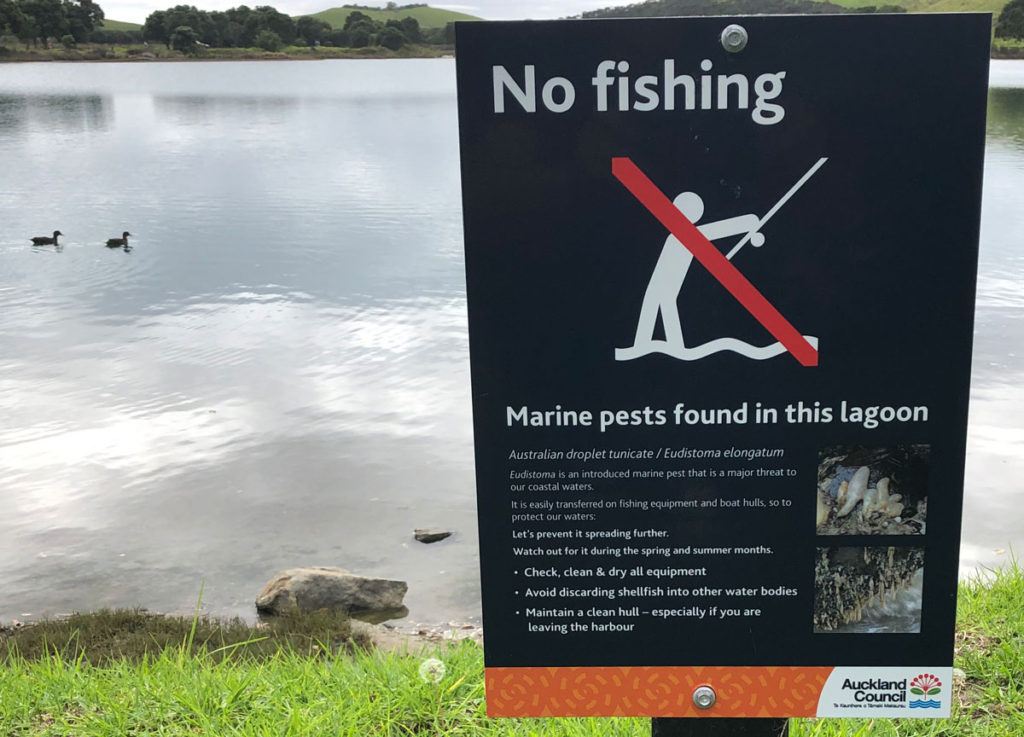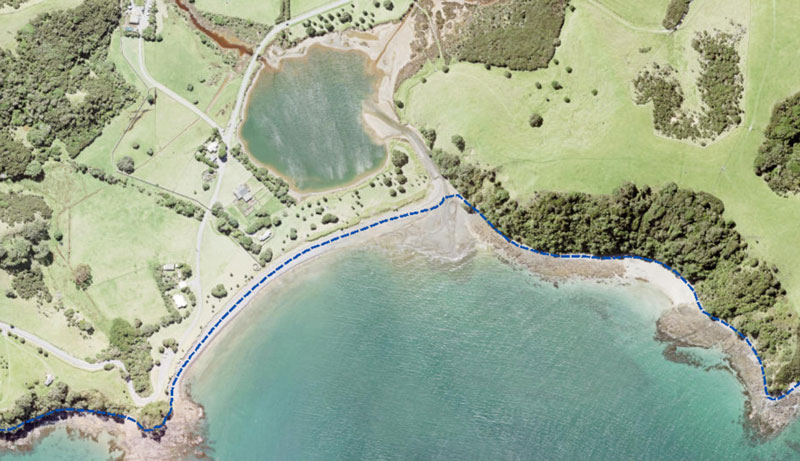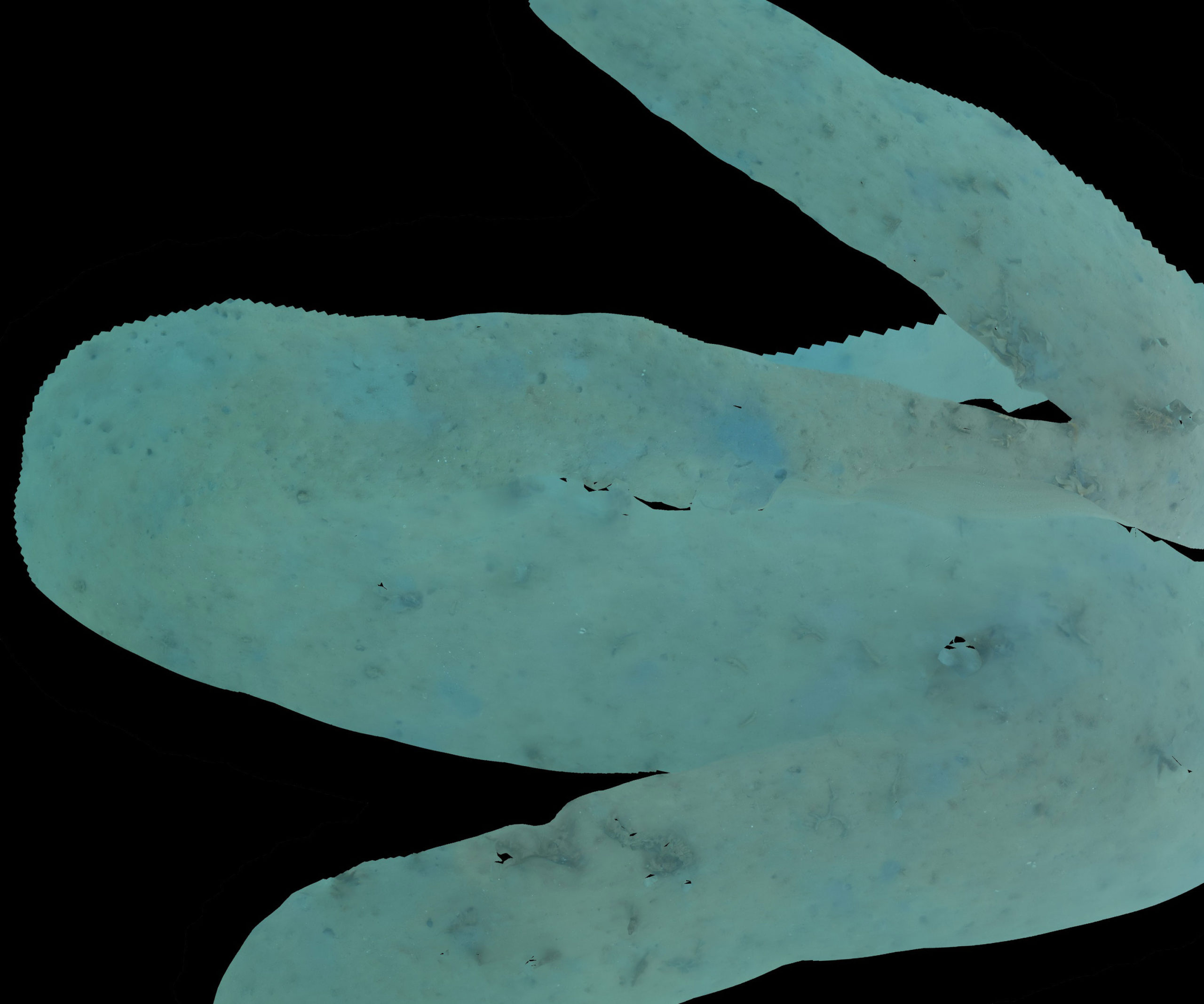I have driven past Jones Bay Lagoon many times and always wondered what’s down there. It was dredged for shingle from about 1870-1950 and would have had a stony seafloor like Jones Bay. I had heard that the mining might have made the lagoon 20 meters deep. Altho I knew there was sediment around the edges I imagined it was quite stable as most of the receiving catchment has been reforested including the regions best example of a wetland (albeit a small one).

I made a few transects at high tide. There was no noticeable current and the visibility above 4m was about 3m. However nearing the 5m mark the visibility dropped to .2m and was not much fun. I was able to easily plunge my hand into the seafloor about 30cm deep before it got uncomfortably sticky and heavy, the mud was very dark grey. The deepest spot I found was 7.5m with most of the lagoon at 5m. The contour of the seafloor varied and did not make sense with the odd ridge appearing in unexpected places.
I saw several fish including, a school of spotty, many yellow-eyed mullet in the shallows, a few snapper, and what I think were estuarine triplefin.

The biggest surprise however was the no fishing signs erected by Auckland Council. I was pleased to see them as it has always felt wrong to allow killing of native species in the Regional Park, which is supposed to be a safe place for nature. It was also a surprise given my recent request for Council to start managing the effects of fishing. This sign however is only here to manage a marine pest called Eudistoma or the Australian droplet tunicate.

I knew that Eudistoma had reached the park because I was alerted by a member of the public on the 4th of February. It was no surprise as they were spreading fast and I documented dense areas of them on the other side of Kawau Bay in February 2019. The lagoon also had large numbers of Mediterranean fanworm (another marine pest) which interestingly often hosted native pleated sea squirts which I have not noticed on fanworm elsewhere. Mediterranean fanworm and Eudistoma are both present in the ocean, meters from the mouth of the lagoon. There was one small cockle bed in a sandy area and several areas with pacific oysters in the shallows. I have asked Auckland Council to comment on the closure which happened in spring 2020.

Response from Auckland Council below.
“The coastal marine boundary follows the South Coast/Jones Bay foreshore of Tāwharanui Regional Park, thus the lagoon is within the regional park, or at very least the land around it.
Fishing here is inconsistent with the general Regional Parks Management Plan to not take flora and fauna. The unwanted organism would be a threat to the Tāwharanui Marine Reserve. The regional parkland provides land based access to the periphery of the reserve and there is a real risk of transfer of organism in viable state on wet fishing gear between the two sites. The identification of the tunicate prompted a management response.“


I am making sure to decontaminate my dive gear, and I do not recommend the area for diving, in fact I think it might be with looking at the sediment inputs and, if they are low, considering the site for mussel bed restoration.
